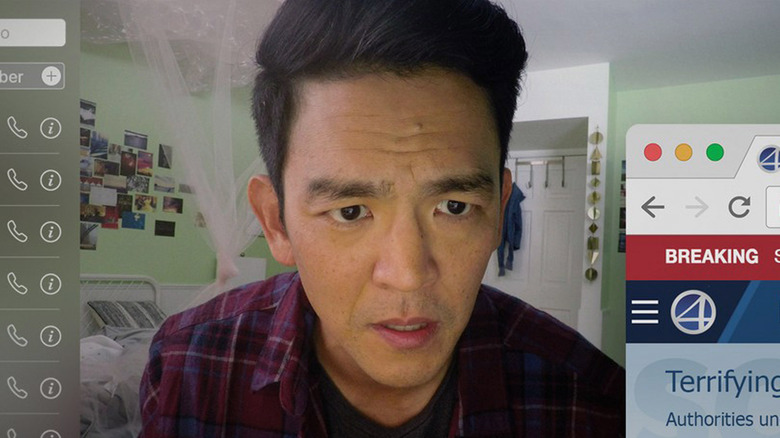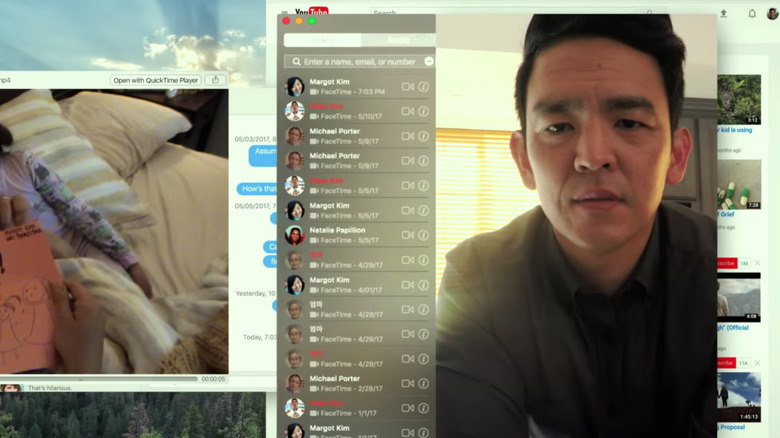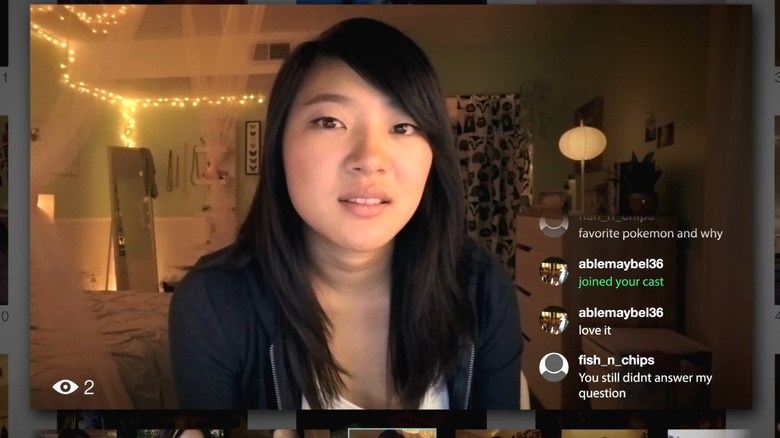Searching's Realistic Computer Screens Resulted In A Massive Amount Of Extra Work
Aneesh Chaganty's 2018 film "Searching" was one of the best films of its year. Employing the language of common, modern computer use as storytelling and pacing devices, "Searching" told the story of a panicking widower (John Cho) who goes on a cyber-hunt for his teenage daughter after she suddenly disappears. "Searching" is a Screenlife movie, constructed entirely from the perspective of laptop screens, cameras, and telephones. The brilliance of Chaganty's film is its slavish authenticity to the modern computer-using experience, managing to capture a world recognizable to anyone who has spent any time online. Too many cyber-thrillers — from "Hackers" to "Friend Request" — have mined drama from a distant approximation of online life, constructing a fictionalized version of modern technology that doesn't feel quite right. "Searching," in employing a heavily branded visual experience, finally feels like the real thing.
The ubiquity of "bad computers" in Hollywood became so ubiquitous that Gizmodo once compiled a list and found several video supercuts of all the back hacking, clumsy tech, and silly-looking cyber-devices envisioned by the filmmakers behind a decade of sci-fi thrillers. We all love "The Lawnmower Man," of course, as Brett Leonard's 1992 film has laid the groundwork for all cinema that came after it, but even the film's staunchest fans must admit some of the technology in it is farfetched.
Aneesh Chaganty and his "Searching" co-screenwriter Sev Ohanian, in an interview with Quartz, talked about the moment of realization they would have to make their film more authentic ... and how much grueling work it would entail.
All the background noise
Because of the Screenlife style of "Searching," the filmmakers knew they had to have their main actor front and center. But it wasn't until they started delving into the specifics of a full laptop screen that Chaganty and Ohanian realized how much additional detail was needed. Says Chaganty:
"It just hit us like a train when we realized it: Even these windows that David wasn't looking at, the ones that weren't focused on the primary story, had to have specific content. So it was a massive amount of work. It's a little hard to quantify, but I think we ended up writing about 25 times more text than we had in the original screenplay."
Those 25 extra pages were filled with carefully thought out "background chatter" that would be visible to the audience. Entire chat windows had to be scripted, entire social media pages approximated. Chaganty and Ohanian constructed not just the personal life of the missing girl Margot (Michelle La), but social lives for all her friends and every person she interacted with. The screenwriters, because it was all going to be seen by the audience, had to essentially write character bibles and timelines for every character. This is a practice usually assigned to actors to allow them to delve more deeply into character. Says Chaganty:
"That was completely intentional on our part. We could have taken the easy way out, but we felt that every story demands to be told a certain way, and this one was asking for this level of detail."
The stories off to the side
An alert viewer may pick up on some of the miniature stories going on in the margins of "Searching." Recurring screennames might be spotted, and the arc of how they react to Margot's disappearance changes throughout the film. Indeed, a damning portion in the film's third act threatens to turn Margot into a conversation piece rather than a person in danger. According to the Quartz article, Chaganty and Ohanian split out the film into 26 beats, one for each letter of the alphabet, and each one entailing a different four-minute portion of the movie. Each beat was a 20-page document that contained every small piece of dialogue and background information that would eventually make it to the screen. That's an extra 520 pages on a script for a movie that ultimately ran a mere 102 minutes. That has to have beaten some kind of record.
Of course, Chaganty and Ohanian also, just for fun, threw in multiple references and in-jokes that only their friends and family might recognize. Chaganty was careful to state, however, that the background information is not central to the film, and, while fun, was not meant to be an elaborate game or code for the viewer to crack:
"There's no prize for you if you figure out everything, but I have a feeling Reddit will be on top of it anyway. We never did this to incentivize people; we always wanted these to be just something you might accidentally discover as you went through the film. So at the end of the day, if you occasionally look to the sides of the screen while you're watching for the second or third time, you'll always find something new to talk about on the way home."
Made on a miniscule budget of $880,000, "Searching" would go on to gross over $75 million worldwide. That's enough to warrant a sequel in the works that will bring back "Searching's" award-winning editors, Will Merrick and Nicholas D. Johnson, as directors. Chaganty and Ohanian wrote the treatment for the sequel, but Merrick and Johnson are writing the script. If the writing ends up being as involved as the first movie, they've got plenty of work ahead of them.


